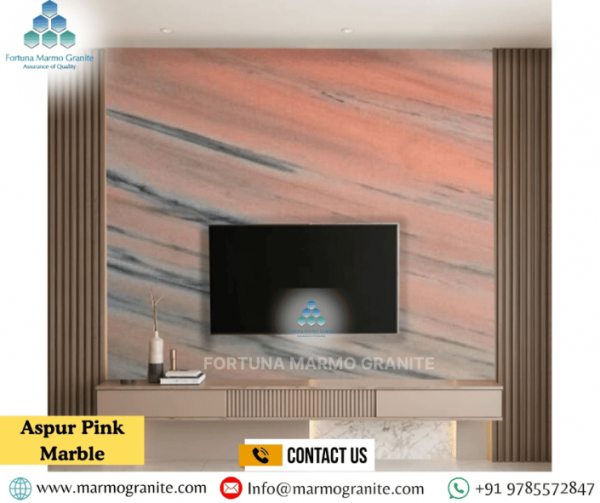Cultured Marble vs. Granite: Which Material Is Right for You?
Indian Marble Supplier When selecting materials for countertops, vanity tops, and other surfaces in your home, two popular options often emerge: cultured marble and granite. Both materials provide distinct characteristics, advantages, and potential drawbacks. By understanding the differences between cultured marble and granite, homeowners and designers can make informed decisions that align with their style preferences, functional needs, and budget.
What is Cultured Marble?
Cultured marble is a man-made material composed of crushed limestone, polyester resins, and pigments. It is cast into molds to create countertops, sinks, shower walls, and other surfaces. Once molded, the surface is coated with a protective gel layer that enhances its durability and adds a glossy finish.
Pros of Cultured Marble
- Affordability: Moreover, Cultured marble is generally more affordable than natural stone, making it an excellent choice for budget-conscious homeowners.
- Customization: In addition, Since it is manufactured, cultured marble comes in various colors and patterns, allowing for a customized appearance.
- Seamless Design: Yet, The manufacturing process allows for integrated sinks and backsplashes, reducing the number of seams and potential weak points.
- Low Maintenance: The non-porous surface resists stains, mold, and mildew, making it easy to clean and maintain.
Cons of Cultured Marble
- Less Natural Appearance: Although it mimics natural stone, cultured marble lacks the unique veining and depth of real granite.
- Less Heat Resistant: Cultured marble can withstand some heat but may discolor or crack if exposed to excessive temperatures.
- Susceptible to Scratches: The gel coating can scratch easily, requiring careful handling and occasional buffing to maintain its shine.
- Limited Lifespan: Over time, the protective layer can wear down, leading to dullness and potential damage.
What is Granite?
Pros of Granite
- Natural Beauty: The uniqueness of each slab provides a high-end and luxurious aesthetic that cannot be replicated.
- Exceptional Durability: Granite is one of the hardest natural materials, resistant to scratches, chips, and heat.
- Heat and Stain Resistance: When properly sealed, granite resists heat and stains, making it ideal for kitchens and bathrooms.
- Long Lifespan: With proper care, granite countertops can last a lifetime, adding value to the home.
- Increases Property Value: The prestige of natural stone enhances the resale value of a home.
Cons of Granite
- Higher Cost: In contrast, Granite is more expensive than cultured marble due to quarrying, transportation, and installation costs.
- Requires Sealing: Unlike cultured marble, granite is porous and needs periodic sealing to prevent stains and bacteria growth.
- Heavy Material: Consequently, Granite is much heavier than cultured marble, necessitating professional installation and sturdy cabinetry for support.
- Limited Color Control: Since granite is natural, color options are limited to what is available in nature.
- Visible Seams: Large countertops may require multiple slabs, leading to visible seams that may not blend perfectly.
Key Comparisons: Cultured Marble vs. Granite
- Appearance
- Cultured marble offers consistent color and patterning, which is ideal for uniform designs.
- Granite provides a unique, natural look with unpredictable variations, making each piece one-of-a-kind.
- Durability and Resistance
- Moreover, Granite is far more durable, resisting heat, scratches, and daily wear and tear better than cultured marble.
- Cultured marble, while durable, is prone to scratches and heat damage if not properly maintained.
- Maintenance Requirements
- Cultured marble is low-maintenance, requiring only regular wiping with mild soap and water.
- Granite needs periodic sealing to prevent stains and maintain its longevity.
- Cost Considerations
- Cultured marble is more budget-friendly, making it a good choice for those seeking an elegant look at a lower price.
- Granite is a premium material that adds long-term value but comes at a higher initial cost.
Which One is Right for You?
- Choose Cultured Marble If:
- Moreover, Want an affordable, stylish, and easy-to-maintain surface.
- In addition, Prefer a consistent look with customizable options.
- Yet, Ned a seamless, integrated design for sinks and backsplashes.
- Installing surfaces in areas with less exposure to heat and heavy wear.
- Choose Granite If:
- Consequently, Desire a luxurious, natural look with unique variations.
- Want a highly durable, scratch-resistant, and heat-resistant material.
- Are willing to invest in long-term value and maintenance.
- Are remodeling a high-traffic area like a kitchen, where durability is crucial.
Conclusion
Indian Granite Supplier Both cultured marble and granite offer distinct advantages, which make them suitable for different applications. For instance, cultured marble provides affordability, easy maintenance, and versatile design options, making it an ideal choice for bathrooms and budget-conscious projects. In contrast, granite delivers exceptional durability, natural elegance, and long-term value, making it the preferred option for high-end kitchen countertops and luxury spaces.
Ultimately, the best choice depends on your specific needs, aesthetic preferences, and budget. Whether you prefer the elegance of natural granite or the practicality of cultured marble, Fortuna Marmo Granite is here to help you find the perfect stone solution for your project. Contact us today for expert guidance and premium-quality stone products!





